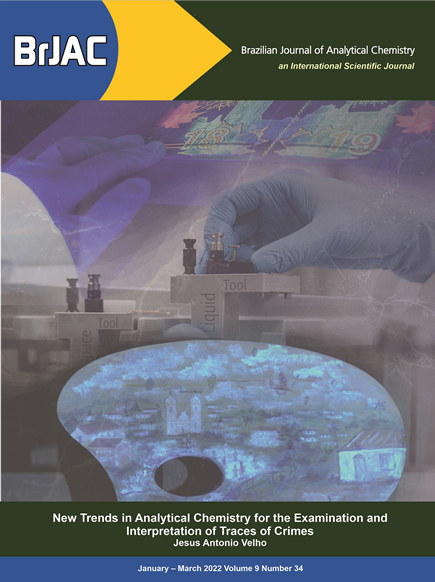
Volume: 9
Issue: 34
Contents:
This is a Special Issue on Forensic Analytical Chemistry with an Editorial titled “Forensic analytical chemistry: Connecting science and justice” by Prof. Dr. Márcia A. M. S. da Veiga; Interview with Prof. Dr. Barry Logan, a prominent toxicologist and forensic analytical chemist; Point of View “Forensic Analysis of Artworks: More than a (Complex) Analytical Issue” by Marcus V. O. Andrade, M.Sc., a senior forensic expert working for the Brazilian Federal Police; Letter “New trends in analytical chemistry for the examination and interpretation of traces of crimes” by Jesus Antonio Velho, PhD, a Federal Criminal Expert; 4 Reviews, 8 Articles and 1 Technical Note; and a Feature on the National Institute of Criminalistics.





































